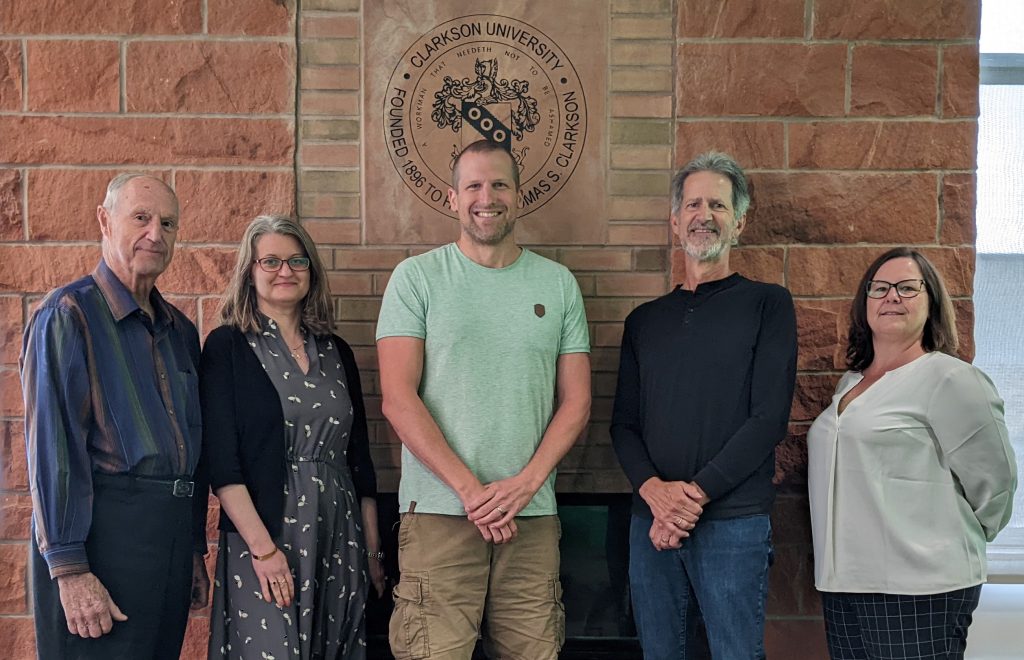A group of Clarkson University professors, led by Kodak CAMP Distinguished Professor of Chemistry and Biomolecular Science Mario Wriedt, has been awarded $654,217 from the Department of Defense’s (DoD) Strategic Environmental Research and Development Program (SERDP) to find and design new advanced adsorbent materials to remove toxic per- and polyfluoroalkyl substances (PFAS) from groundwater.

The team includes Dean of the Graduate School Michelle Crimi, who initiated the project and led the proposal preparation, Egon Matijevic Endowed Chair of Chemistry & Biomolecular Science Silvana Andreescu, Jean S. Newell Distinguished Professor of Engineering Thomas Holsen, Adjunct Research Professor Richard Partch, all as Co-Principal Investigators. The group also includes University of Nebraska Associate Professor Nirupam Aich and University of Central Florida Assistant Professor Anwar Sadmani.
Wriedt and Partch will be studying how to use metal-organic frameworks (MOFs) to remove PFAS more quickly and efficiently from groundwater. Metal-organic frameworks (MOFs) are a class of highly porous materials that are structured similarly to a jungle gym, where the nodes represent metal clusters, the struts are organic ligands, and the pores of the framework are accessible for guest molecules.
Wriedt said MOFs are highly tunable and can be tailor made to handle PFAS removal, which makes them an attractive prospect for mitigating PFAS. Led by Andreescu and Aich, the group will also explore using lanthanide-based and reduced graphene oxide-supported nanoscale zero valent iron-based media, respectively.
“We are thankful for the support of Clarkson’s Center for Air and Aquatic Resources Engineering (CAARES),” Wriedt pointed out. Led by Holsen, CAARES is currently DoD ELAP accredited for PFAS analysis and therefore playing a critical role for the project.
The project award comes at a time where the Environmental Protection Agency (EPA) is tightening its regulations on PFAS limits.
“Our materials need to meet those EPA requirements. We need to be better than those guidelines,” said Dean Crimi as established PFAS expert.
Wriedt said the Clarkson group’s research is only one such project underway, as the Department of Defense casts a wide net in search for the best remediation strategy for PFAS. The goal, he said, is to identify the process by which both capacity and speed of removal are optimized.